Refueling in space
Oxygen mining on the Moon
Refueling in space
Oxygen mining on the Moon
Humanity is going back to the moon, this time to stay. The main obstacle to this amazing endeavour is the extraordinary cost of transporting mass from Earth to the lunar surface. Shipping anything from earth to the lunar surface is estimated at a staggering cost of several hundreds of thousands of dollars per kilogram, turning any long-term mission close to economically unviable. Most of the weight of a rocket is its propellant, comprised of fuel (methane or hydrogen) and oxidizer (oxygen) in most upcoming transportation systems. Oxygen accounts for over 75% of the propellant’s weight.
Helios is developing technologies to extract oxygen from the lunar regolith, providing essential rocket fuel oxidizer, reducing the cost of future space activities.
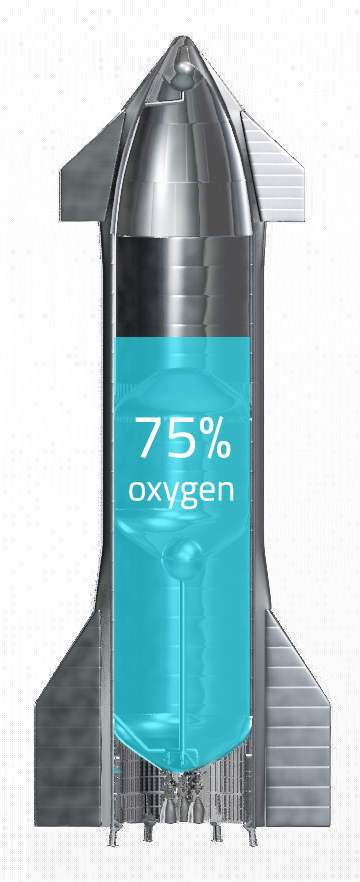
(Mass percentage of various elements on the lunar surface)
Approximately 45% of the soil mass of the moon is made of oxygen.
Humanity is going back to the moon, this time to stay. The main obstacle to this amazing endeavour is the extraordinary cost of transporting mass from Earth to the lunar surface. Shipping anything from earth to the lunar surface is estimated at a staggering cost of several hundreds of thousands of dollars per kilogram, turning any long-term mission close to economically unviable. Most of the weight of a rocket is its propellant, comprised of fuel (methane or hydrogen) and oxidizer (oxygen) in most upcoming transportation systems. Oxygen accounts for over 75% of the propellant’s weight.

Helios is developing technologies to extract oxygen from the lunar regolith, providing essential rocket fuel oxidizer, reducing the cost of future space activities.

(Mass percentage of various elements on the lunar surface)
Approximately 45% of the soil mass of the moon is made of oxygen.
Core Technology
Molten Regolith Electrolysis (MRE) Reactor
The MRE Reactor is the heart of Helios’s system. Lunar regolith is melted and electrolyzed to separate the abundant oxides found all over the lunar surface into oxygen and various metals such as iron, aluminum, titanium and more.
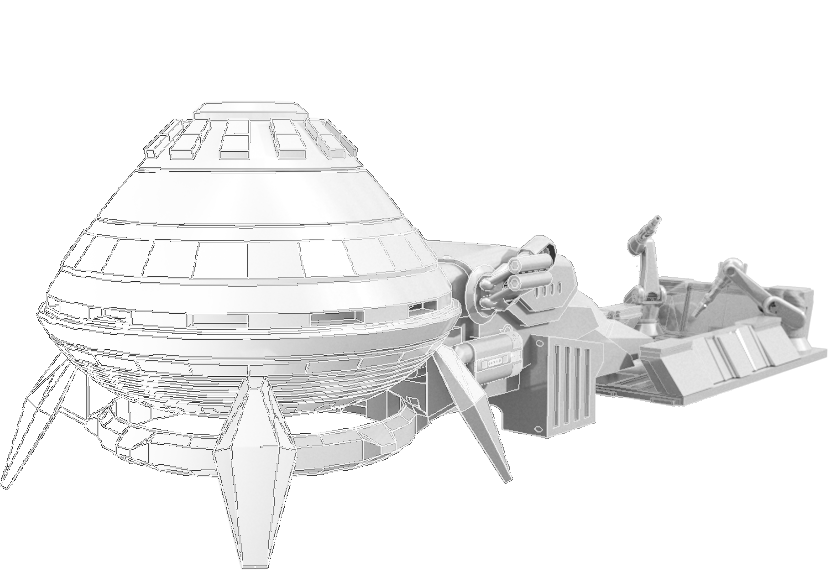
Economic Potential
Oxygen produced on the moon will dramatically reduce launch mass from earth, as it will save the need in supplying terrestrial oxygen beyond Low Earth Orbit (LEO). Whether it’s for use on the lunar surface, in cislunar space, or for trans-Martian injections, the production of lunar oxygen will save costs and enable a more sustainable future for humanity beyond Earth.

Supplying lunar oxygen to Low Earth Orbit (LEO) for refueling rapidly reusable rockets will eliminate the need for carrying oxygen to conduct Entry – Descent – and – Landing (EDL), thereby increasing the payload capacity to LEO.
The long-term vision of space mining
Eliminating the need for fossil fuels requires a lot of metals and minerals. We can approximate the total amount of materials needed for a sustainable earth by estimating the needed new solar panels, batteries, electrical vehicles, geothermal and nuclear plants, dedicated infrastructure and so on.
Copper
Required Production 4,575,000,000 t
Known Reserves 880,000,000 t
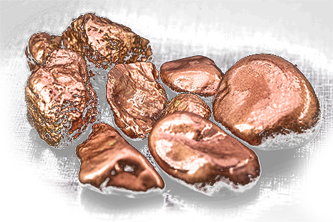
Cobalt
Required Production 218,400,000 t
Known Reserves 7,600,000 t
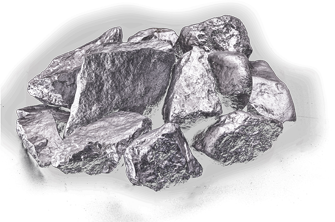
Graphite
Required Production 8,973,600,000 t
Known Reserves 320,000,000 t
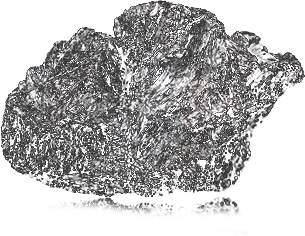
Lithium
Required Production 944,000,000 t
Known Reserves 95,000,000 t
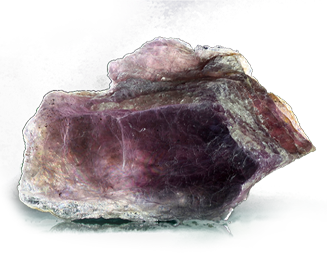
The quantity of raw materials needed to transition to a fully sustainable life on earth, compared to all the known raw minerals that exist on earth, which are simply not enough. (reference article)
We can try to minimize these discrepancies with new technologies but the only way to really solve this problem is to get these resources from beyond earth, mining the moon and near-earth asteroids. There is an abundance of materials in space, which will easily satisfy our needs for the foreseeable future. Helios is developing technology to drastically reduce space flight costs bringing us closer to an economically viable space mining future.
Core Technology
Molten Regolith Electrolysis (MRE) Reactor
The MRE Reactor is the heart of Helios’s system. Lunar regolith is melted and electrolyzed to separate the abundant oxides found all over the lunar surface into oxygen and various metals such as iron, aluminum, titanium and more.

Economic Potential
Oxygen produced on the moon will dramatically reduce launch mass from earth, as it will save the need in supplying terrestrial oxygen beyond Low Earth Orbit (LEO). Whether it’s for use on the lunar surface, in cislunar space, or for trans-Martian injections, the production of lunar oxygen will save costs and enable a more sustainable future for humanity beyond Earth.

Supplying lunar oxygen to Low Earth Orbit (LEO) for refueling rapidly reusable rockets will eliminate the need for carrying oxygen to conduct Entry – Descent – and – Landing (EDL), thereby increasing the payload capacity to LEO.
The long-term vision of space mining
Eliminating the need for fossil fuels requires a lot of metals and minerals. We can approximate the total amount of materials needed for a sustainable earth by estimating the needed new solar panels, batteries, electrical vehicles, geothermal and nuclear plants, dedicated infrastructure and so on.
Copper
Required Production 4,575,000,000 t
Known Reserves 880,000,000 t

Cobalt
Required Production 218,400,000 t
Known Reserves 7,600,000 t

Graphite
Required Production 8,973,600,000 t
Known Reserves 320,000,000 t

Lithium
Required Production 944,000,000 t
Known Reserves 95,000,000 t

The quantity of raw materials needed to transition to a fully sustainable life on earth, compared to all the known raw minerals that exist on earth, which are simply not enough. (reference article)
We can try to minimize these discrepancies with new technologies but the only way to really solve this problem is to get these resources from beyond earth, mining the moon and near-earth asteroids. There is an abundance of materials in space, which will easily satisfy our needs for the foreseeable future. Helios is developing technology to drastically reduce space flight costs bringing us closer to an economically viable space mining future.
Helios Project Ltd © 2023
